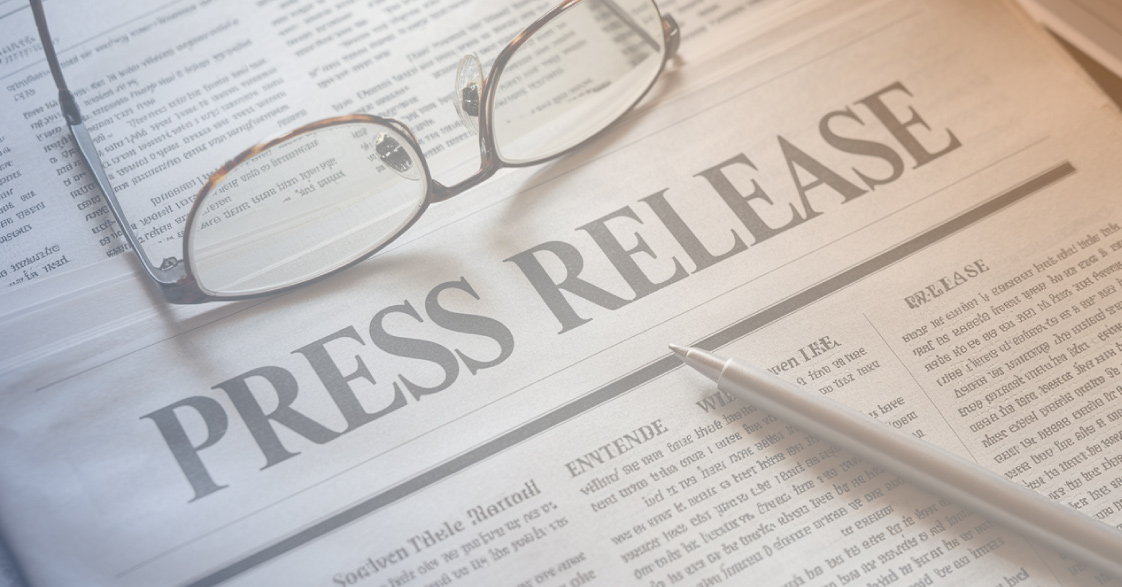All About Press Releases: A Complete Guide to PR Agency and Students

What is a Press Release?
Definition and Purpose of a Press Release
A press release is a structured, formal written communication to share newsworthy information with media outlets. Organizations use press releases to announce important developments such as product launches, events, company updates, or milestones. They serve as a critical tool in public relations and marketing strategies.
Primary Purposes of a Press Release:
- Attract Media Attention: Press releases aim to secure coverage from journalists, bloggers, and media outlets, confirming the News reaches a broad audience.
- Inform the Public: Press releases provide factual and concise information to keep stakeholders and the general public informed about important updates.
- Enhance Brand Visibility: Consistently publishing press releases enables companies build brand recognition and establish credibility in their industry.
Historical Evolution of Press Releases
1. Early Days: Traditional Media Focus
In the early 1900s, press releases were printed documents distributed to newspapers and magazines. This era was limited to traditional media channels, demanding direct relationships with journalists and editors for dissemination.
2. The Digital Era: Transition to Online Formats
The beginning of the internet brought a significant shift:
- Press releases were sent via email, eliminating the dependency on physical distribution.
- Organizations started hosting press releases on their websites or online newsrooms, increasing accessibility for journalists and the public.
3. Modern Practices: Multimedia-Rich Content
In today's marketing landscape, press releases have become more dynamic and interesting:
- Multimedia Integration: Press releases often include videos, images, and infographics to captivate audiences.
- SEO Optimization: Companies incorporate keywords, links, and metadata to enhance the press release's online discoverability.
- Wider Distribution: Digital tools and platforms like PR Newswire and Business Wire allow press releases to reach global audiences instantly.
Key Takeaways:
- Press releases have evolved from static, printed documents to versatile digital tools.
- Modern press releases combine traditional objectives (e.g., attracting media) with modern tactics like SEO and multimedia to maximize impact.
- They remain a cornerstone of effective communication, bridging the gap between organizations, media, and the public.
Purpose of Press Releases
Press releases are a fundamental communication tool for organizations to share information and handle their public presence. Below are the key purposes of press releases:
1. Communicating News
The main role of a press release is to announce newsworthy events and updates to the media and public. These can include:
Product Launches: Press releases highlight new products or services, showcasing their features and benefits.
Example:
"TechCorp unveils the first solar-powered smartphone at the Global Tech Expo 2023, offering unmatched sustainability for eco-conscious consumers."
Event Announcements: Organizations use press releases to publicize webinars, conferences, and grand openings to attract attendees and media attention.
Example:
"Join us for the Annual Health Tech Summit 2023, featuring over 50 industry leaders sharing innovations in healthcare technology."
2. Building Brand Credibility
Press releases are vital for establishing and maintaining a company's reputation in the industry by:
Strengthening Media Relationships: Regularly providing newsworthy content fosters trust and collaboration with journalists and media outlets.
Positioning as an Industry Thought Leader: Organizations can cement their authority in the market by conveying expert opinions, research findings, or milestone achievements.
Example:
"GreenFuture Solutions wins Sustainability Innovation Award, furthering its commitment to renewable energy."
3. Managing Public Image
During crises or controversies, press releases are a transparent channel for organizations to address concerns and maintain trust. They help:
Clarify Misunderstandings: Deliver factual updates to counter misinformation.
Reassure Stakeholders: Highlight the steps to resolve issues and prevent future occurrences.
Example:
"XYZ Inc. addresses customer concerns following recent product recall, ensuring safety standards and giving refunds to affected consumers."
Key Takeaways:
Press releases communicate critical updates to the right audience, such as new product launches and events.
They help build credibility by positioning companies as reliable and authoritative sources.
Press releases are important for crisis management and maintaining public trust during challenging times.
Key Components of a Press Release
Drafting an effective press release requires attention to structure and detail. Below are the essential components, along with examples and tips for success:
1. Headline
The headline is the most critical element, as it is the first thing a reader notices. A well-crafted headline grabs attention and inspires further reading.
Tips for an Effective Headline:
- Use strong, action-oriented language that conveys urgency or excitement.
- Keep it concise, ideally under 80 characters.
- Highlight the core message or key benefit.
Example:
"TechCorp Launches Revolutionary Solar-Powered Smartphone."
2. Lead Paragraph
In the lead paragraph, you answer the essential questions: Who, What, When, Where, Why, and How. This paragraph establishes the tone and provides a quick overview of the announcement.
Example:
"TechCorp announced today the release of the world's first solar-powered smartphone, a sustainable solution for tech-savvy consumers, unveiled at the Global Tech Expo 2023."
3. Body Content
The body of the press release expands on the lead paragraph by providing supporting details, data, and quotes. It should build on the story and add depth to the statement.
Suggested Structure:
- Paragraph 1: Elaborate on the principal announcement.
Example: "The solar-powered smartphone combines cutting-edge technology with eco-friendly features, allowing users to charge their devices using renewable energy."
- Paragraph 2: Include a company executive or stakeholder quote to add credibility.
Example:" 'We are thrilled to introduce a device that not only meets the needs of modern customers but also contributes to a greener planet,' said John Doe, CEO of TechCorp."
- Paragraph 3: Provide additional context or background information.
Example: "This innovation marks a significant milestone in TechCorp's mission to lead the market in sustainable technology solutions."
4. Boilerplate
A boilerplate is a standardized paragraph at the end of the press release that provides essential information about the company. It gives media outlets a quick overview of the organization.
Example:
"About TechCorp: TechCorp is a leader in sustainable technology solutions, dedicated to innovative designs that enhance lives and protect the planet. For more information, visit www.techcorp.com."
5. Contact Information
Always include contact details so journalists and media representatives can provide more information.
What to Include:
- Name: Contact person for media inquiries.
- Email: A professional email address.
- Phone Number: A direct number for quick communication.
- Website Link: A link to the business website or newsroom for additional details.
Example:
"Media Contact:
Jane Doe
PR Manager, TechCorp
Email: press@techcorp.com
Phone: +1 (555) 123-4567
Website: www.techcorp.com"
Key Takeaways:
- A compelling headline and lead paragraph are crucial to capturing attention.
- The body content should support the announcement with details, data, and quotes.
- A boilerplate provides essential background on the company, while contact information ensures media can easily follow up.
Formatting and Style
Letterhead and Branding
- Use official company branding elements like logos and colour schemes.
- Place the company's letterhead at the top for professionalism.
Tone and Voice
Maintain a professional, objective tone. Tailor the voice depending on the nature of the release:
- Formal: For corporate or financial announcements.
- Conversational: For lighter News or promotions.
Distribution Channels
Traditional Media Outlets
Send press releases to:
- Newspapers and magazines.
- Radio and television broadcasters.
Building relationships with journalists increases the likelihood of coverage.
Online News Distribution Services
Platforms like:
- PR Newswire
- Business Wire
- GlobeNewswire
These services ensure wide online distribution and increase visibility.
Social Media
Share press releases on:
- Twitter (snippets with links).
- LinkedIn (professional audiences).
- Facebook (engaged communities).
Example: "Exciting News! TechCorp launches its revolutionary solar-powered phone. Read more here [link]."
Company Newsroom
Create a dedicated newsroom on your website to host all press releases. This will provide journalists and stakeholders with easy access to company updates.
Best Practices for Writing Press Releases
Observe these best practices to create an effective press release that catches attention and delivers results. Each aspect ensures clarity, engagement, and visibility for your News.
1. Clarity and Conciseness
Press releases should communicate information clearly and succinctly to ensure easy readability.
Avoid Jargon: Use simple language to ensure your message is accessible to a broad audience, including journalists and readers unfamiliar with industry-specific terms.
Short, Clear Sentences: Keep sentences concise and to the point. Avoid overly complex structures that might confuse the reader.
Example:
Instead of: "Our organization is leveraging cutting-edge technological advancements to optimize operational efficiency in a groundbreaking manner,"
Write: "Our company uses innovative technology to improve efficiency."
2. Newsworthiness
Your press release should be appropriate, timely, and impactful to capture media interest.
- Timeliness: Ensure the news ties into current events or trends.
- Example: A new product launch before a holiday season or with an industry event.
- Impact: Highlight how the announcement affects your audience or industry.
- Example: A healthcare company introducing a life-saving treatment.
- Human Interest: Connect the News to relatable stories or emotions.
- Example: Sharing a customer's success story related to your product.
Pro Tip: Review your press release with a journalist's perspective: "Why would this matter to readers?"
3. Visual Elements
Adding visuals makes your press release more engaging and easier to share.
- High-Resolution Images: Include quality photos that illustrate your announcement, such as product shots or event photos.
- Infographics: Use data-driven visuals to simplify complex information and make it more digestible.
- Short Videos: Add videos to enhance storytelling and provide dynamic content for media outlets and social platforms.
Example: A press release about a product launch could include a photo of the product, a demo video, and an infographic showing its key benefits.
4. SEO Optimization
Optimize your press release for search engines to increase its online visibility and propel traffic to your website.
- Keywords: Incorporate relevant keywords naturally into the headline, subheadings, and body text. Example: For a tech company launching a new smartphone, use phrases like "solar-powered smartphone" or "innovative smartphone features."
- Hyperlinks: Link to relevant web pages, such as your product page, event registration, or company website. For example, "Learn more about TechCorp's solar-powered smartphone here."
Pro Tip: Avoid keyword stuffing, reducing readability and harming your SEO performance.
Measurement and Evaluation
Media Coverage
Track mentions across:
- Print articles.
- Online publications.
- Broadcast media.
Engagement Metrics
Measure:
- Social media shares, likes, and comments.
- The press release drives website traffic.
ROI Analysis
Evaluate the return on investment by:
- Comparing campaign costs against media coverage value.
- Analysing leads or conversions generated.

